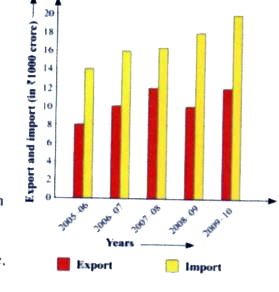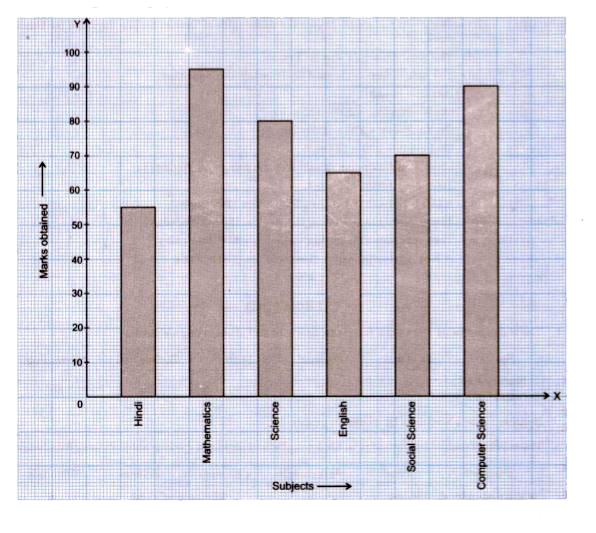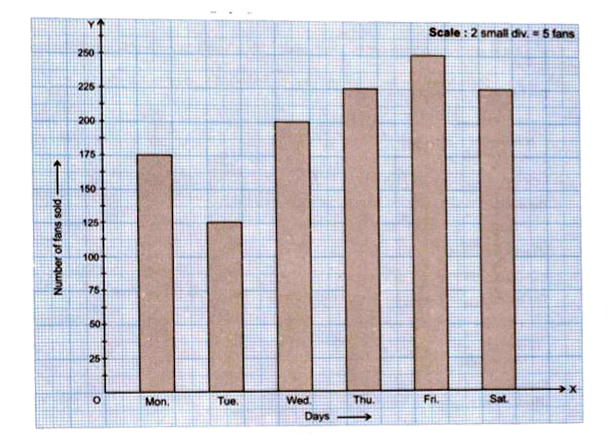Read the following bar graph (Figure) and answer the following questions: What is the information given by the bar graph? State each of the following whether true or false. The number of government companies in 1957 is that of 1982 is 1:9. The number of government companies have decreased over the year 1957 to 1983
Step-by-Step Solution
Step 1: Analyze the Bar Graph
- The bar graph represents the number of government companies in India over several years. The x-axis indicates the years (e.g., 1957, 1982, etc.), while the y-axis shows the number of government companies.
Step 2: Extract Data from the Graph
- From the bar graph, we can extract the following data:
- In 1957, the number of government companies is 50.
- In 1982, the number of government companies is approximately 375.
Step 3: Determine the Ratio of Government Companies in 1957 to 1982
- To find the ratio of the number of government companies in 1957 to those in 1982, we set up the ratio as follows:
- Ratio = Number of companies in 1957 : Number of companies in 1982
- Ratio = 50 : 375
- To simplify this ratio, we divide both numbers by 25:
- 50 ÷ 25 = 2
- 375 ÷ 25 = 15
- Therefore, the simplified ratio is 2:15.
Step 4: Evaluate the First Statement
- The first statement claims that the ratio of the number of government companies in 1957 to that in 1982 is 1:9.
- Since we found the ratio to be 2:15, we conclude that the statement is False.
Step 5: Evaluate the Second Statement
- The second statement claims that the number of government companies has decreased from 1957 to 1983.
- From our data, we see that in 1957 there were 50 companies and in 1982 there were 375 companies.
- Since 375 is greater than 50, we conclude that the number of government companies has increased over the years.
- Therefore, the second statement is also False.
Summary of Answers
1. The information given by the bar graph is the number of government companies in India over several years.
2. The first statement is False.
3. The second statement is False.
---
- The bar graph represents the number of government companies in India over several years. The x-axis indicates the years (e.g., 1957, 1982, etc.), while the y-axis shows the number of government companies.
- From the bar graph, we can extract the following data:
- In 1957, the number of government companies is 50.
- In 1982, the number of government companies is approximately 375.
- To find the ratio of the number of government companies in 1957 to those in 1982, we set up the ratio as follows:
- Ratio = Number of companies in 1957 : Number of companies in 1982
- Ratio = 50 : 375
- To simplify this ratio, we divide both numbers by 25:
- 50 ÷ 25 = 2
- 375 ÷ 25 = 15
- Therefore, the simplified ratio is 2:15.
- The first statement claims that the ratio of the number of government companies in 1957 to that in 1982 is 1:9.
- Since we found the ratio to be 2:15, we conclude that the statement is False.
- The second statement claims that the number of government companies has decreased from 1957 to 1983.
- From our data, we see that in 1957 there were 50 companies and in 1982 there were 375 companies.
- Since 375 is greater than 50, we conclude that the number of government companies has increased over the years.
- Therefore, the second statement is also False.
1. The information given by the bar graph is the number of government companies in India over several years.
2. The first statement is False.
3. The second statement is False.
Topper's Solved these Questions
Similar Questions
Read the bar graph and answer the following questions.
What information is given by the bar graph?

View SolutionRead the given bar graph and answer the question that follow :

What information is represented by the bar graph?
View SolutionObserve the bar graph given below :

Read the bar graph carefully and answer the following questions :
What information is given by the bar graph?
View SolutionRead the bar graph shown in Figure and answer the following questions: What is the information given by the bar graph? What is the order of the change of number of students over several years? State whether true or false. The enrolment during 1996-97 is twice that of 1995-96
View SolutionRead the following bar graph (Figure) and answer the following questions: What information is given by the bar graph? What was the production of cement in the year 1980-81? What is the minimum and maximum productions of cement and corresponding years?
View SolutionRead the following bar graph shown in Figure and answer the following questions: What is the information given by the bar graph? In which month was the sale of the book maximum? In which month was the sale of the book minimum? What is the total sale of the book during these five months?
View SolutionRead the following bar graph shown in Figure and answer the following questions: What is the information given by the bar graph? In which month was the sale of the book maximum? In which month was the sale of the book minimum? What is the total sale of the book during these five months?
View SolutionRead the bar graph shown in Figure and answer the following questions: What is the information given by the bar graph? What was the number of commercial banks in 1977? What is the ratio of the number of commercial banks in 1969 to that in 1980? State whether true or false: The number of commercial banks in 1983 is less than double the number of commercial banks in 1969.
View SolutionRead the bar graph given in Figure and answer the following questions: What information is given by the bar graph? In which years the areas under the sugarcane crop were the maximum and the minimum? State whether true or false: The area under the sugarcane crop in the year 1982-83 is three times that of the year 1950-51
View SolutionRead the following bar graph and answer the following questions: What information is given by the bar graph? In which year the export is minimum ? In which year the import is maximum ? In which year the difference of the values of export and import is maximum?
View Solution
